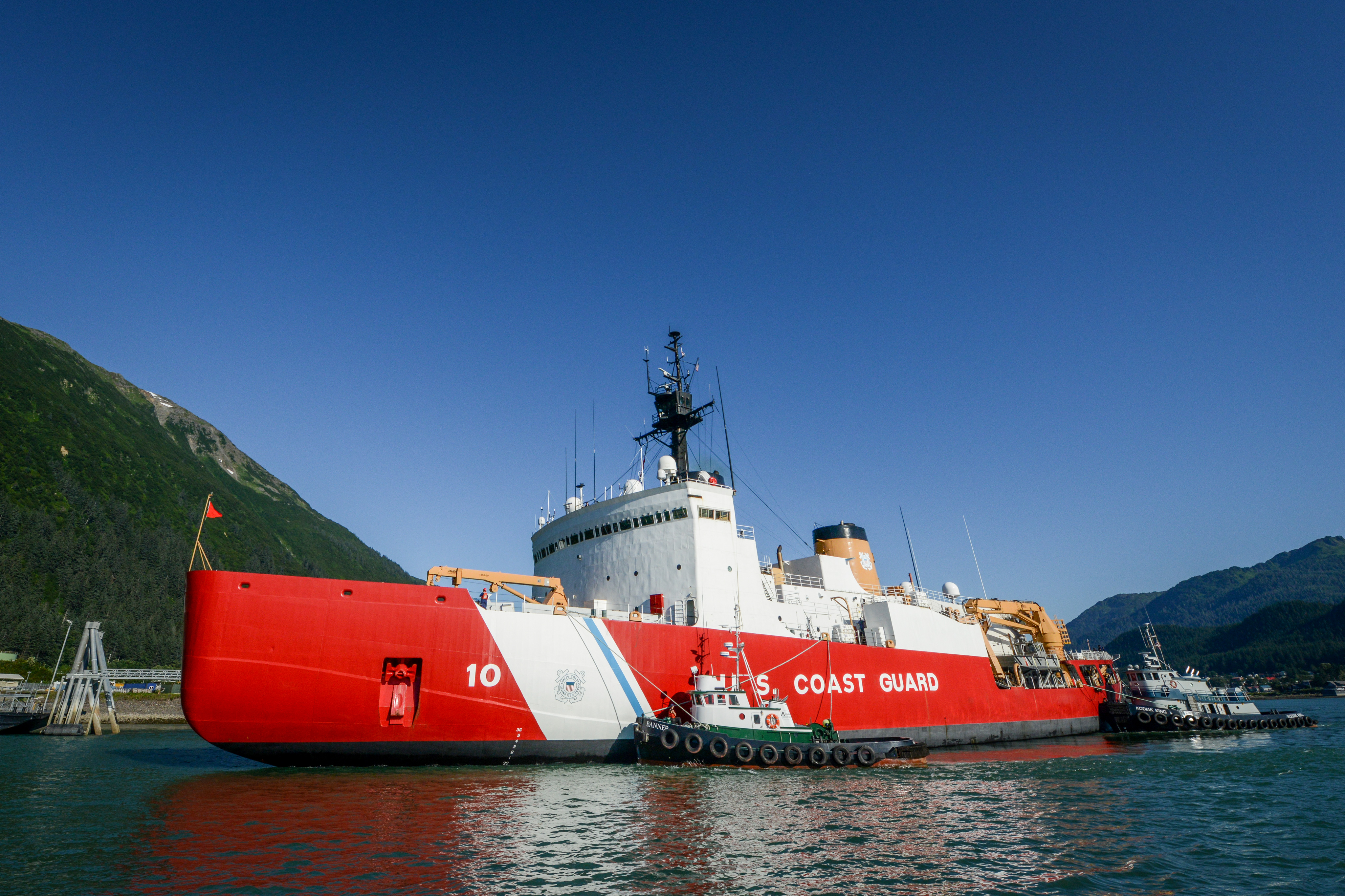The Week Ahead: Tip of an iceberg
The U.S. Coast Guard’s lack of ice-breaking capacity is obvious. What is easier to miss are the other ways it is involved in the region

Mention the United States Coast Guard in an Arctic context, and it is the service’s gradually shrinking ice-breaking capacity that attracts most attention. That is why, as the service celebrates the 228th anniversary of its founding on Aug. 4, most of the discussion of its role in the region will center on the possibility that, by 2029, America may be without an operational polar icebreaker.
Should it get that far, some of the responsibility will belong, according to a report published last week by the Government Accountability Office, a Congressional watchdog, at the feet of the Coast Guard itself for failing to set aside adequate time for the design, construction and trials of a new icebreaker before the Polar Star, America’s sole heavy icebreaker, must be taken out of service.
The Coast Guard, by all accounts, has indeed set an improbable timeframe, but that it has done so is ironic, given that it has spent much of the past decade warning Washington that its fleet of polar icebreakers, which otherwise includes only the Healy, a medium icebreaker that is used primarily for research, is in dire need of reinvigoration. In 2013, for example, the service’s brass suggested that, in order to meet its future requirements in the region, it would need, at a minimum, three heavy and three medium icebreakers.
[How the US could quickly find itself without a working heavy icebreaker]
The ships, it argues, are necessary if it is to operate in an Arctic that will see more ships, more tourists, more drilling and more security challenges.
Judging the Coast Guard’s involvement in the Arctic solely by its ice-breaking capacity, however, is to miss most of the other ways that the service is active in the region. One of the most basic of these is its search-and-rescue responsibilities. Although this is already one of the service’s 11 primary tasks, a 2013 Arctic Council agreement legally binds the Coast Guard (on behalf of the U.S.) to work with the search-and-rescue authorities from the other Arctic states to ensure that incidents can be properly responded to by sea and by air. In contrast to its ice-breaking capacity, America’s ability to conduct search-and-rescue in the region is on par, at least, with other Arctic states.
Separately, the Coast Guard, along with the Russian Coast Guard, played a leading role in establishing the Arctic Coast Guard Forum, which, though separate from the Arctic Council agreement, complements it by giving commanders a way to make sure they can live up to its stipulations for responding to incidents. Topics like prevention and the development of common guidelines are also within the scope of the forum’s mandate.
Alongside all of its operational contributions, the U.S. Coast Guard Academy, which trains the service’s officers, adds to the discussion about the Arctic through academic study. The Center for Arctic Study and Policy seeks, it says, to educate the service’s future leaders about the complexities of the region. Given the service’s repeated appeals to decision makers to pay close attention to the Arctic, this appears to have been successful. Figuring out how to make the message sink in in Washington may require advanced study.
A tough read
Also this week, on Aug. 1, scientists from the American Meteorological Society and NOAA, a U.S. science agency, release their annual State of the Climate report.
Published annually since 1990, the report provides a pole-to-pole review of global climate indicators, climate data and significant weather events.
Reports cover the previous year, meaning that an analysis of this year’s extreme summer heat in the North, including parts of Sweden, Finland and Russia north of the Arctic Circle, where it has resulted in wildfires, will have to wait until next year.
Even with mounting probability that fires of the sort seen in the Arctic, as well as other extreme weather that is increasingly being experienced worldwide has its origin in a warming climate, the report prefers to document, rather than establish a relationship between the trends established by climate indicators and highly variable weather observations.
The approach makes for dry reading without any jumping to to conclusions. Those are painfully obvious.
The Week Ahead is a preview of some of the events related to the region that will be in the news in the coming week. If you have a topic you think ought to be profiled in a coming week, please email [email protected].